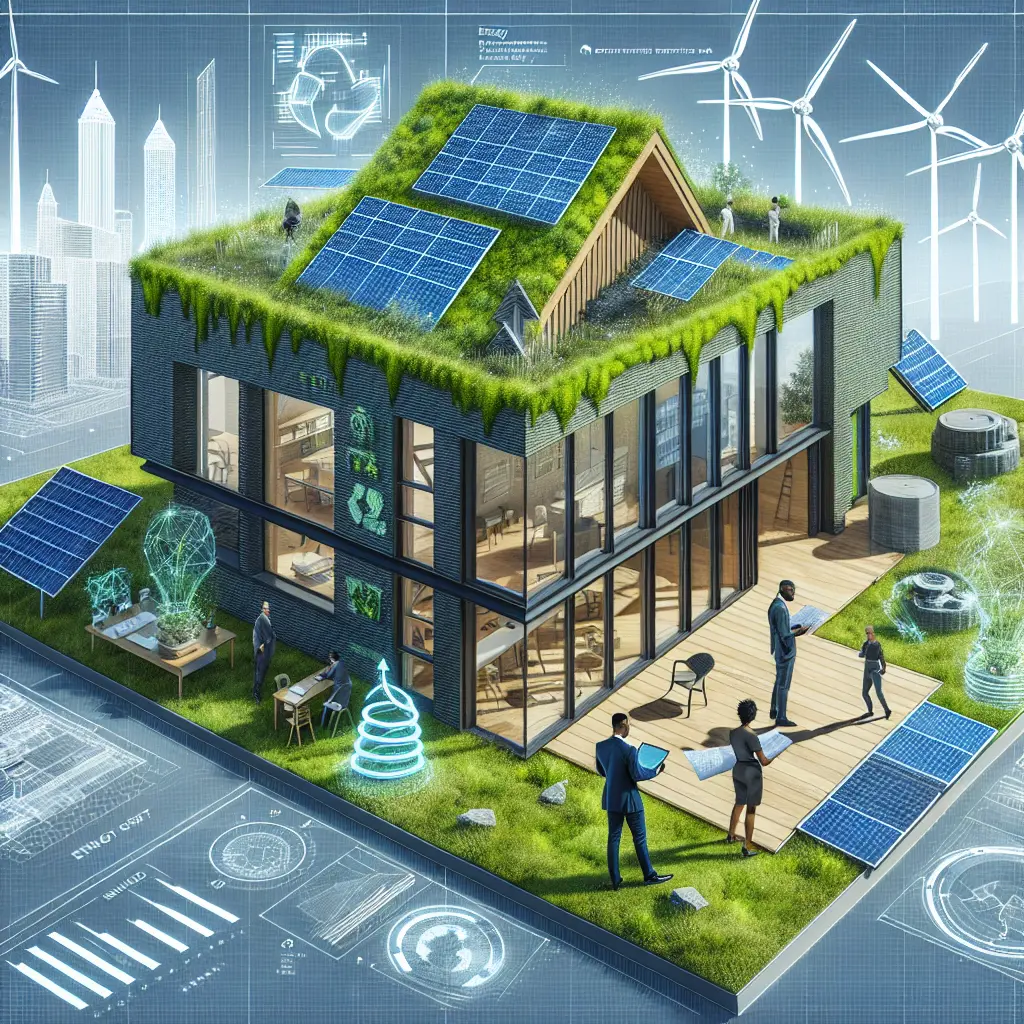
In the ever-evolving world of architecture and design, the push towards sustainability has transitioned from a mere trend to a necessity. As we step further into 2024, the integration of sustainable materials and energy-efficient building design is not just about reducing environmental footprints but also about crafting spaces that enhance human and ecological well-being. The recent surge in innovative sustainable architecture projects and materials exemplifies this shift towards a greener future.
Exploring Sustainable Materials and Techniques
Sustainable materials are at the core of eco-friendly construction. These materials not only minimize environmental impact but also offer durability and longevity, reducing the need for frequent replacements. For instance, Adrenalina’s initiative at the Sustainable Agorà Exhibition, which showcased four new collections featuring reused production materials, is a testament to how design can creatively reduce waste. This approach not only diverts materials from landfills but also challenges designers to rethink resource usage in production processes.
Green Building Techniques: A Holistic Approach
Green building techniques encompass a broad spectrum of practices, from the selection of eco-friendly construction materials to the implementation of renewable energy systems. A significant aspect of green building is passive solar design, which involves the use of building orientation, window placement, and thermal mass materials to harness solar energy for natural heating and lighting. This method significantly reduces the reliance on artificial heating and cooling systems, promoting a low-energy building solution.
Moreover, natural insulation options such as sheep’s wool or recycled denim provide effective alternatives to synthetic insulations, which often contain harmful chemicals. By choosing natural and sustainable options, builders can improve indoor air quality and energy efficiency.
Renewable Energy Systems and Energy Efficiency
The integration of renewable energy systems like solar panels, wind turbines, and geothermal energy into building designs is pivotal in achieving energy efficiency in construction. These systems not only supply clean energy but also reduce dependence on non-renewable energy sources, making buildings more self-sustaining.
Sustainable Architecture: Beyond Energy Efficiency
Sustainable architecture goes beyond energy conservation. It includes environmentally friendly building practices that ensure minimal disturbance to the site, promoting biodiversity and preserving natural water cycles. An excellent illustration of this principle is the wooden, light-filled visitor center designed by WXY Architecture for a nature preserve in New York. This project prioritizes ecological sensitivity and community engagement, setting a benchmark for sustainable architectural design.
Controversies and Challenges in Sustainable Design
While many projects aim for sustainability, the reality of achieving these goals can be complex. Saudi Arabia's initiative, The Line—a proposed eco-city—has sparked debates among experts regarding its environmental and sustainable claims. Such controversies highlight the challenges in transparently implementing and marketing sustainable urban developments.
Innovative Student Contributions
Emerging architects and designers are also playing a crucial role in advancing sustainable building technologies. For instance, students at Arts University Bournemouth and Anglia Ruskin University have showcased projects that emphasize diversity and accessibility while employing sustainable methods like digital fabrication and 3D printing. These projects not only reflect innovative green retrofitting techniques but also underscore the importance of inclusivity in design.
Looking Ahead: Sustainable Futures
The future of construction lies in the balance of innovation, functionality, and sustainability. Projects like KPF’s redesign of the HSBC skyscraper in Canary Wharf to include terraces and green spaces are paving the way for multi-functional, sustainable urban spaces. Furthermore, calls for integrating architectural competitions into events like the Olympics, as suggested by Pharrell Williams, indicate a growing recognition of architecture’s role in cultural sustainability.
Conclusion
As we continue to navigate the complexities of modern living and environmental stewardship, the adoption of sustainable materials, energy-efficient building designs, and green building techniques becomes increasingly crucial. By learning from innovative examples and ongoing discussions in the field, we can strive to create spaces that do not just exist but positively thrive within their environments.
Signing off, Alana Sterling
For further reading on sustainable design innovations and expert discussions, readers might explore architectural digests, sustainability journals, and environmental blogs that provide deeper insights into the latest trends and technologies shaping our built environments.